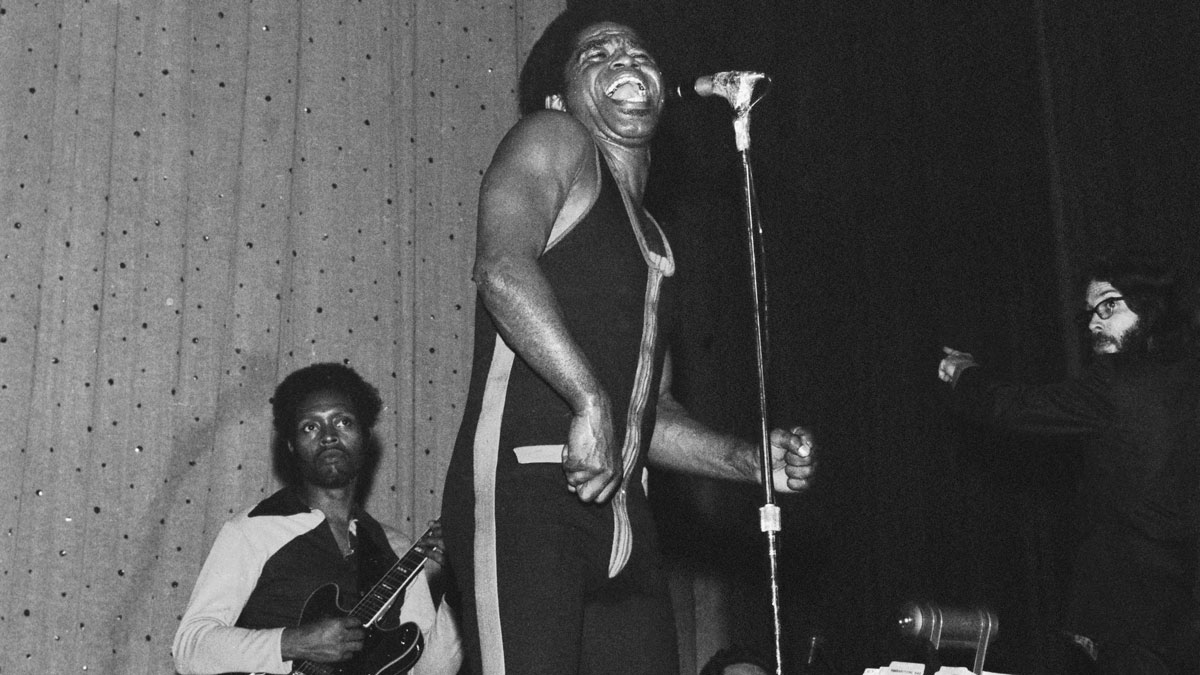11 ways to invigorate your funk rhythm chops
This James Brown-inspired workout is not just for funk – all rhythm players can learn from these techniques and approaches

Funk is one of the most important musical styles of the past 60 years. Its musical tentacles reach into so many genres that it’s difficult to overestimate its influence. It can feed into all aspects of your playing, from holding down a basic rhythm to helping develop groove within your soloing.
All forms of funk lead back to the pioneer and Godfather of Soul, James Brown, who, in the mid-’60s, began to experiment with the syncopated rhythms of New Orleans jazz. While R&B, soul and motown tended to emphasise the backbeat (beats two and four), the classic JB signature groove was to emphasise the downbeat with a heavy emphasis on beat 1.
In this lesson, we’ll zone in on three of Brown’s most prominent guitarists: Jimmy Nolen, ‘Catfish’ Collins and ‘Cheese’ Martin. All three were responsible for some of his most iconic funk hooks, where simplicity and space are crucial.
Example 1. Common funk devices
Ex1 features three common funk devices: syncopation, fretting-hand muting and the ubiquitous Dominant 9 chord. Jimmy Nolen tended to pick close to the bridge where there is less give in the strings, to create a punchy, percussive sound.
His single-note ideas were based around the chords rather than being derived from scales, and they would often outline the song’s harmony with 3rds, b7s and a sound you’ll often hear in funk rhythm guitar, octaves.
Example 2. Sliding dominant chords
A trademark of JB’s funk was moving to the IV chord for the bridge section, used here with Dominant 9 and 13 extended chords. The move to the V chord at the end of the phrase gives the classic blues-style anticipation of returning ‘home’.
The emphasis here is on offbeat 16th upstrokes, which create the syncopation against a classic Clyde Stubblefield-style drum groove. The semitone chord slides became a Nolen trademark that all subsequent JB guitarists mimicked.
Example 3. Jimmy Nolen 16th strumming
Ex3 is a great example of Nolen’s relentless 16th-note technique, focused on single notes with swing. It can take some time to build up to his almost superhuman stamina, so take this slowly at first, being mindful of any tension that can easily creep into your forearm or shoulder.
Example 4. Two guitar arrangements; the lower part
The next two ideas show how Nolen and Alphonso ‘Country’ Kellum would find parts that fit seamlessly together without stepping on each other’s toes. The initial descending Bb minor pentatonic idea is split across two guitars in two octaves, then the main low note groove features Nolen-esque single-note picking.
Example 5. Two guitar arrangements; the higher part
Kellum’s job was to keep out of the way of Nolen’s intricate 16th ideas, so we see an economy of movement on beats 2 and 4. It’s important to pay attention to the rests, as they’re crucial to create space between the two parts. Placing each guitar part in a different register creates separation in both pitch and timbre.
Example 6. Chicken scratch style
The next riff draws on James Brown’s hypnotic groove style with what looks like a fragment of a Dm chord. However, the small triangle chord shape is actually part of a bigger chord. The notes of F, A and D are the actually the b7-9-5 from a 9th chord, with no 3rd played.
In this band context, they become part of a Gm9 sound. The three precise string mutes on beat 1 and the switching between single and multi-string mutes are typical of Nolen’s ‘chicken scratch’ style.
Example 7. Catfish Collins rhythm
Ex7 is an example of ‘Catfish’ Collins’ more energetic 16th-note playing, as heard on tracks such as Super Bad. His ferocious picking hand was relentless at higher tempos, so maintain a floating hand position and keep a very loose wrist to replicate his style.
If the pick digs into the strings, you’ll stumble, so try not to aim into the body of the guitar on the downstroke (your pick should not travel into the pickguard).
Example 8. Catfish Collins pull-off line
This is based on one of Collins’ trademark pull-off lines. We’re normally taught to avoid pull-offs from the Major to Minor 3rd in blues, but it works here as the predominant sound we hear is still the D7 chord. Use downstrokes, with the pull-off happening as the picking hand returns in mid-air as an upstroke.
Example 9. Catfish Collins riffing and chromatic
This demonstrates Collins’ jazz roots with a D Dorian based riff with some chromatic notes thrown in. Check out his extended solo on the 1971 Paris Olympia Live rendition of Sex Machine where you’ll hear his amazing Wes Montgomery-meets-funk style in all its glory.
Example 10. Cheese Martin syncopations
This ‘Cheese’ Martin-style idea has lots of cross-rhythms and syncopation as the picking hand mainly follows groups of three 16th notes. Beat 4 is used as a pivot to get back to the downbeat on beat 1. There are two backing tracks for this example to help you experiment playing both straight and swung rhythms.
Example 11. Syncopation using tritones
This final groove is a slight variation of the previous example, but focuses on the economical tritone (b5) shape. Depending on how you look at these two intervals, they could be viewed as the 3rd and b7 (G and Db) of Eb7, or the b7 and 3rd (G and C#) of A7 . Bottom line, it’s a very useful shape in funk!
Get The Pick Newsletter
All the latest guitar news, interviews, lessons, reviews, deals and more, direct to your inbox!
Steve is one of the UK’s most versatile guitar players and professional music educators. He has toured and played for the likes of Mica Paris, Lily Allen, Ronan Keating, Lulu, Westlife and Lianne Rimes. Between performing in the West End and recording as a busy session musician, Steve also regularly writes for Total Guitar and Guitar Techniques magazines. He’s also BIMM London’s Head of LPW (Live Performance Workshop) and one of its senior guitar specialists. He loves to share his knowledge and passion for playing and getting the best from guitarists, whatever the level.
“There are so many sounds to be discovered when you get away from using a pick”: Jared James Nichols shows you how to add “snap, crackle and pop” to your playing with banjo rolls and string snaps
Don't let chord inversions bamboozle you. It's simply the case of shuffling the notes around








![Joe Bonamassa [left] wears a deep blue suit and polka-dotted shirt and plays his green refin Strat; the late Irish blues legend Rory Gallagher [right] screams and inflicts some punishment on his heavily worn number one Stratocaster.](https://cdn.mos.cms.futurecdn.net/cw28h7UBcTVfTLs7p7eiLe.jpg)


